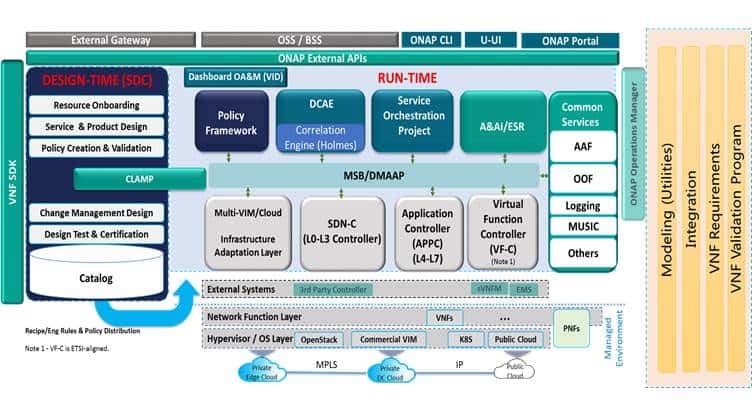The Open Network Automation Platform (ONAP) Project's second release - ONAP Beijing - made available this week by the LF Networking team, brings the network automation and ochestration platform toward container-based implementations via the new ONAP Operations Manager (OOM).
OOM supports the migration to microservices-based deployments on Kubernetes.
The Beijing release accelerates ease of ONAP deployment for modern network operators and comes as more leading global service providers commit to enhancing open source networking.
In general for the latest release, the developer community has focused closely on new platform and process enhancements to ensure scalability, security, stability and performance in support of real-world deployments. It is also enhanced with robust documentation which includes new startup and operations guides for users and design guides and API and SDK documentation for service designers and VNF developers.
ONAP has collaborated with MEF and TMForum on external APIs, ensuring those frameworks and APIs can communicate seamlessly with the ONAP platform. It also worked closely with the OPNFV Verified Program (OVP), which simplifies adoption in commercial NFV products and establishes an industry threshold based on OPNFV capabilities and test cases, to coordinate integrations via the ONAP VNFSDK and ONAP VNF Validation Program (VVP) components.
The Beijing release code is being integrated into new and existing proofs of concept and production deployment plans for large global carriers like AT&T, Bell Canada, China Mobile, China Telecom, Orange, Reliance Jio, Verizon, Vodafone, Turk Telecom, among others.
ONAP claims that the platform now accounts for more than 65% of global subscriber participation through carriers creating a harmonized, de-facto open source platform.
Arpit Joshipura, GM of Networking, The Linux Foundation
We are delighted to announce the availability of ONAP’s second release, Beijing, which advances the architecture, seven dimensions of deployability, and new automation functionality.
Mazin Gilbert, ONAP Technical Steering Committe (TSC) Chair and VP, Advanced Technology, AT&T
The technical enhancements in this release focus on enhancing the stability and deployability of the platform.




















